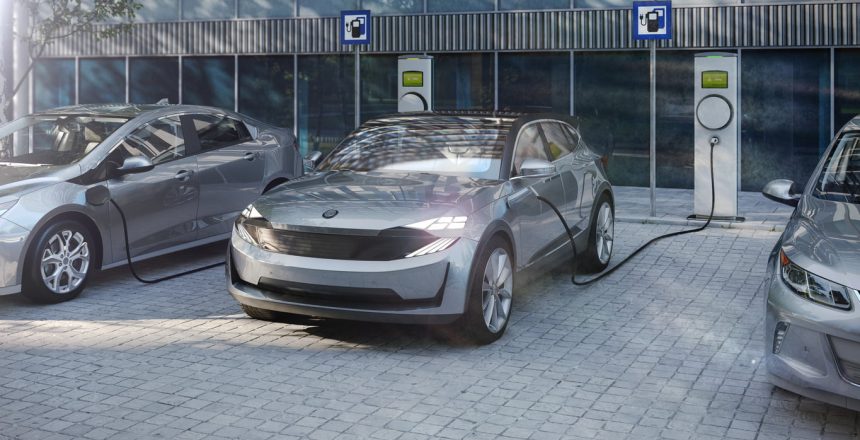Electric vehicles are taking the world by storm, but the technology might not be right for every household.
Unless you’ve been living under a rock, you know that electric vehicles are becoming incredibly popular. Globally, consumers purchased over 3.2 million plug-in vehicles in 2020, and that number should trend upward in the years to come.
Investors are taking notice, too, with electric car giant Tesla shares reaching $900 in 2020 before settling in the $800 range.
All of this points to a growing industry that should see its share of car sales reach new heights in 2021 as consumers get more comfortable with the technology.
However, despite all their positive features, electric vehicles might not be right for every household, at least not as a primary car.
Here’s a look at some benefits of electric cars and how these vehicles could fit into your lifestyle.
The benefits of an electric car
Before all else, it’s important to look at the positives of owning an electric car. After all, there are more models and styles to choose from than ever before, giving consumers all sorts of options.
First, there’s the growing distance these cars can travel, as even the least expensive products on the market, like the Kia Niro EV, have a range of about 240 miles between charges. On the other hand, premium vehicles like the Tesla S have a range of up to 520 miles. The range is becoming less of an issue every year, making it easier to own an electric car.
There are significant fuel cost savings associated with driving an electric car. The U.S. Department of Energy estimates that a 2021 Tesla Model 3 with all-wheel drive costs about $600 per year to fuel. By comparison, the 2021 Honda Accord, an incredibly fuel-efficient gas-powered vehicle, costs $1,150 to fuel. The result is $550 in annual savings over even the most efficient gasoline cars.
Compared to the average new vehicle, a Tesla Model 3 can save its owner $5,000 in fuel costs every five years.
Electric vehicles also require less maintenance because they don’t have the same number of components as a gas-powered car. Owners can conserve on regular maintenance costs like oil changes, air filter changes, and cooling system charges, and these cars don’t have spark plugs or drive belts to replace, either.
These features result in a cheaper vehicle to own and operate for the near-term future.
When you combine these personal benefits with the fact that electric vehicles produce fewer emissions, it makes sense why these products are growing in popularity.
Some potential issues
Despite the benefits of electric vehicles, it is a good idea to look at some of the drawbacks when determining if buying one is the right choice for you.
One reason to think twice is the upfront expense, as these cars cost more than their gasoline-powered counterparts. The Tesla S starts at about $80,000 with some options costing over $140,000. These numbers put the vehicle in the same cost bracket as luxury vehicles from Jaguar, Audi, and Porsche.
There’s also the hassle involved with charging the vehicle, which becomes a regular part of ownership. No matter where you are, you have to think about where you’ll plug-in your car. If you live in an apartment building without off-street parking or take your vehicle on vacation, this could lead to challenges.
The time involved with charging is also an issue. While there are high-speed chargers in public locations, they still take up to 60 minutes to fully charge the car. When charging at home, you can expect it to take about 10 hours using a 240-volt outlet.
As a result, these vehicles aren’t the best for families that share a single car. This is because there’s always someone coming and going, which can make it difficult to get a full charge.
Other options to consider
These drawbacks could scare some buyers away from electric vehicles, but you should know that other options exist.
For instance, the electric vehicle doesn’t have to be the only one in your home. You can always use the electric car as your daily commuter while having a gas-powered car available for quick trips to the store. That way, you can take advantage of the electric car’s cost savings without worrying as much about the battery.
There are plug-in hybrid vehicles on the market, too, that run between 15 and 50 miles as a pure electric vehicle before switching to hybrid mode once the battery dies. That way, you can enjoy some of the electric car’s cost-savings but use the gasoline engine when you need it.
You might also require a gas vehicle with a more extensive range when taking vacations with the family or if you plan to spend the winter in a warmer environment and need to get your car there. The other option is to ship the vehicle to your destination.
Shipping an electric car
Taking an electric vehicle on a family vacation or a cross-country trip can be slow-going. This is because you’ll have to stop every 200-500 miles to recharge the battery. However, you can use an auto transport service to ship the vehicle to your destination, saving you time and hassle along the way.
Mercury Auto Transport can put you in touch with some of the industry’s most reputable car shipping providers. We only present quotes from FMCSA licensed and insured carriers, ensuring you can be 100% confident with your shipment. Contact us to receive a quote or speak with a car shipping representative.






